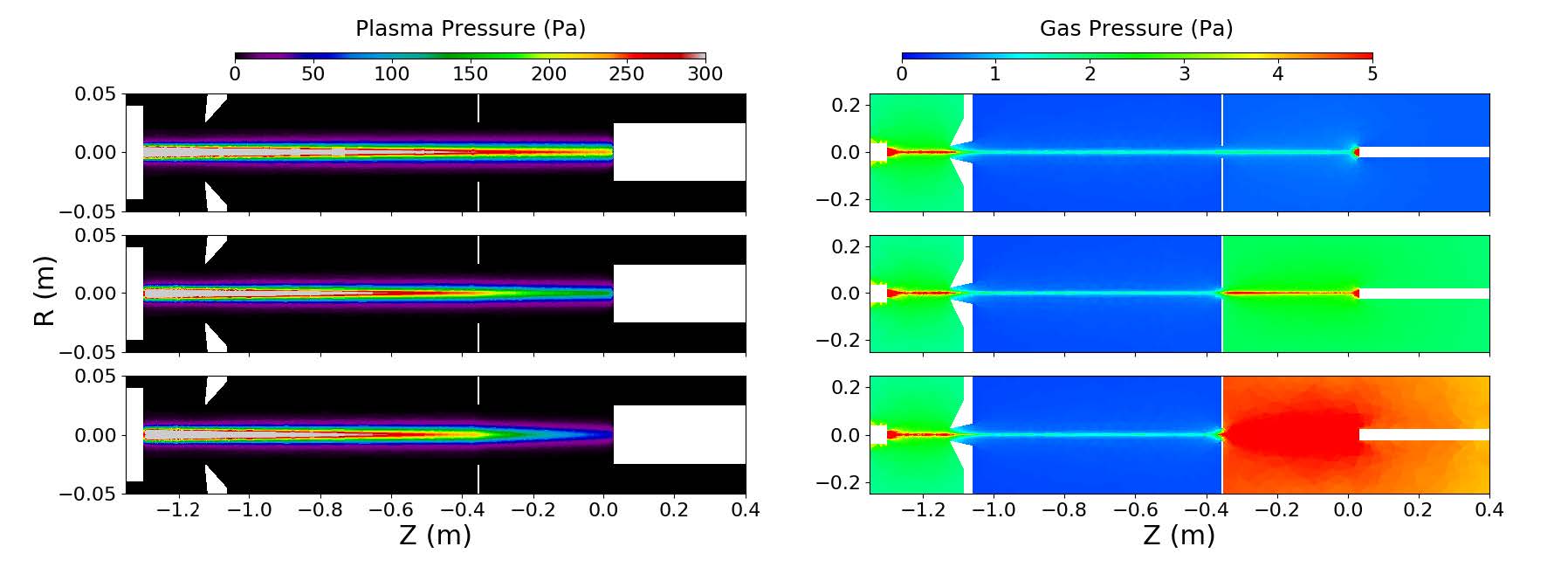The Integrated Modelling and MHD group develops theory and numerical tools for modelling of fusion plasmas. The group has two main lines of research: 1) Edge Plasma and Divertor Physics, and 2) Core plasma heating and stability.
1) In the research line of edge plasma and divertor modelling, we focus, in particular, on the processes responsible for divertor detachment. Here the interaction of plasma with neutral gas is centre stage and the modelling typically involves the use of a coupled code suite existing of a plasma fluid code and a kinetic neutral particle code, like SOLPS-ITER. The plasma-neutral intertaction is modelled both for linear plasma generators like MAGNUM-PSI as well as for tokamak divertors. In additon we develop fast reduced models of the dynamics of divertor plasmas.

Figure: Simulations of the plasma and neutral gas pressures in a series of MAGNUM-PSI experiments illustrating the plasma "detachment" when the neutral gas pressure near the target (on the right) is increased (Ray Chandra et al., 2021, PPCF).
2) In the research line of core plasma heating and stability control, we focus on plasma heating and non-inductive current drive by electron cyclotron waves (ECRH and ECCD) and magnetohydrodynamic (MHD) instabilities. These two topics come together in the application of ECRH and ECCD for the control of MHD instabilities.

Figure illustrating the suppression of a 2/1 magnetic island by ECRH. The heating location is controlled under feedback by measuring the island position in the Electron Cyclotron Emission (ECE, yellow) spectrum observed inline with the high power heating beam

DIFFER is a member of the EUROfusion consortium, which comprises 30 fusion research organisations and universities from 26 European member states plus Switzerland and Ukraine.